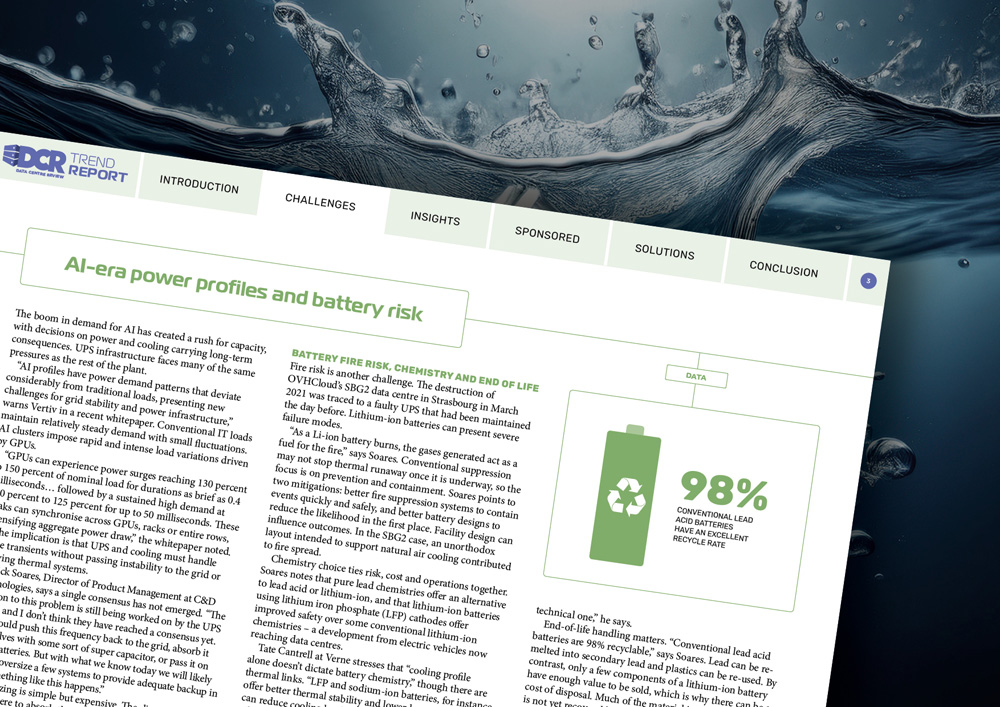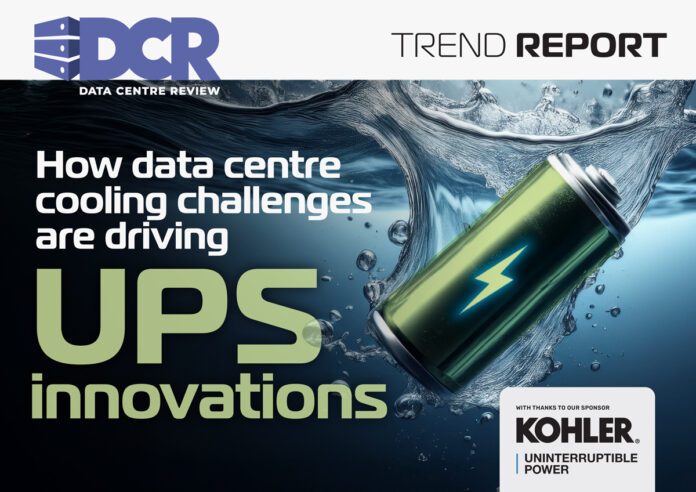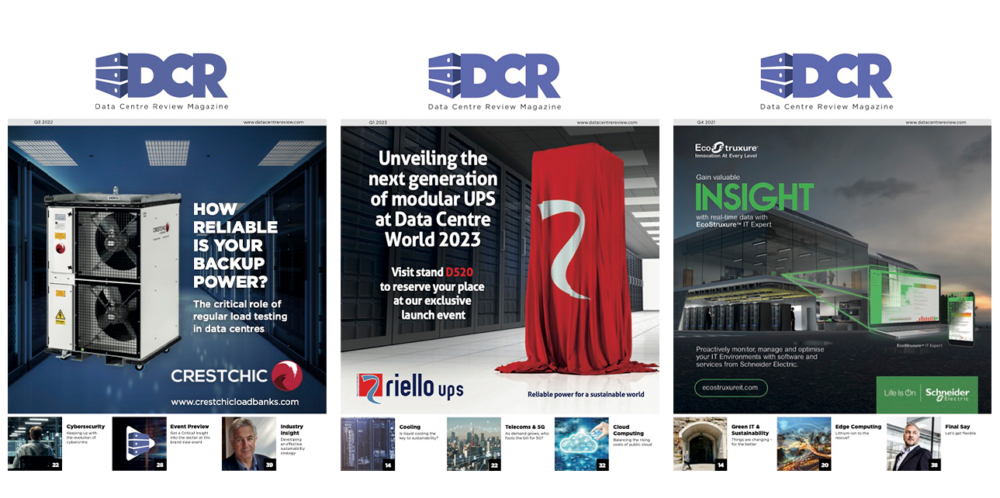When GPU racks start pulling 132 kW, with designs on the way for 1 MW and even 1.5 MW, the old assumptions about ‘thermal ride’ no longer hold. Cooling can’t wait for generators to spin up. Which means UPS systems can’t just protect IT loads anymore. They must keep cooling alive too.
That’s what we explore in our latest trend report, How data centre cooling challenges are driving UPS innovations, charting the surge in AI demand and runaway rack densities which are rewriting the rules of power protection.
We spoke with experts from Kohler Uninterruptible Power, Schneider Electric, Verne, Kao Data, LiquidStack, Advanced Liquid Cooling Technologies, i3 Solutions and more to map how cooling and UPS are becoming inseparable.
In this report you’ll discover:
- Why AI-era load shapes, with GPU spikes hitting 150% of nominal draw, are forcing UPS to evolve
- How lithium-ion battery risks are being tackled with new chemistries like LFP and sodium-ion, and why recyclability remains a sticking point
- Where operators stand on centralised versus rack-level UPS – and what it means for liquid-cooled density.
- Why silicon-carbide inverters, modular architectures and grid-interactive UPS point to a more flexible, efficient future.
- The hidden costs of lithium-ion compliance, from containment systems to insurance premiums
- How UPS-backed cooling auxiliaries (pumps, CDUs, controls) are critical to sustaining high-density racks during power events
Plus, we include exclusive insights from Kristian Weatherley Kaye from Kohler Uninterruptible Power, who sets out why rising GPU heat loads mean UPS systems must go modular, grid-savvy and cooling-first.
You can sign up to receive the full report straight to your inbox here:



